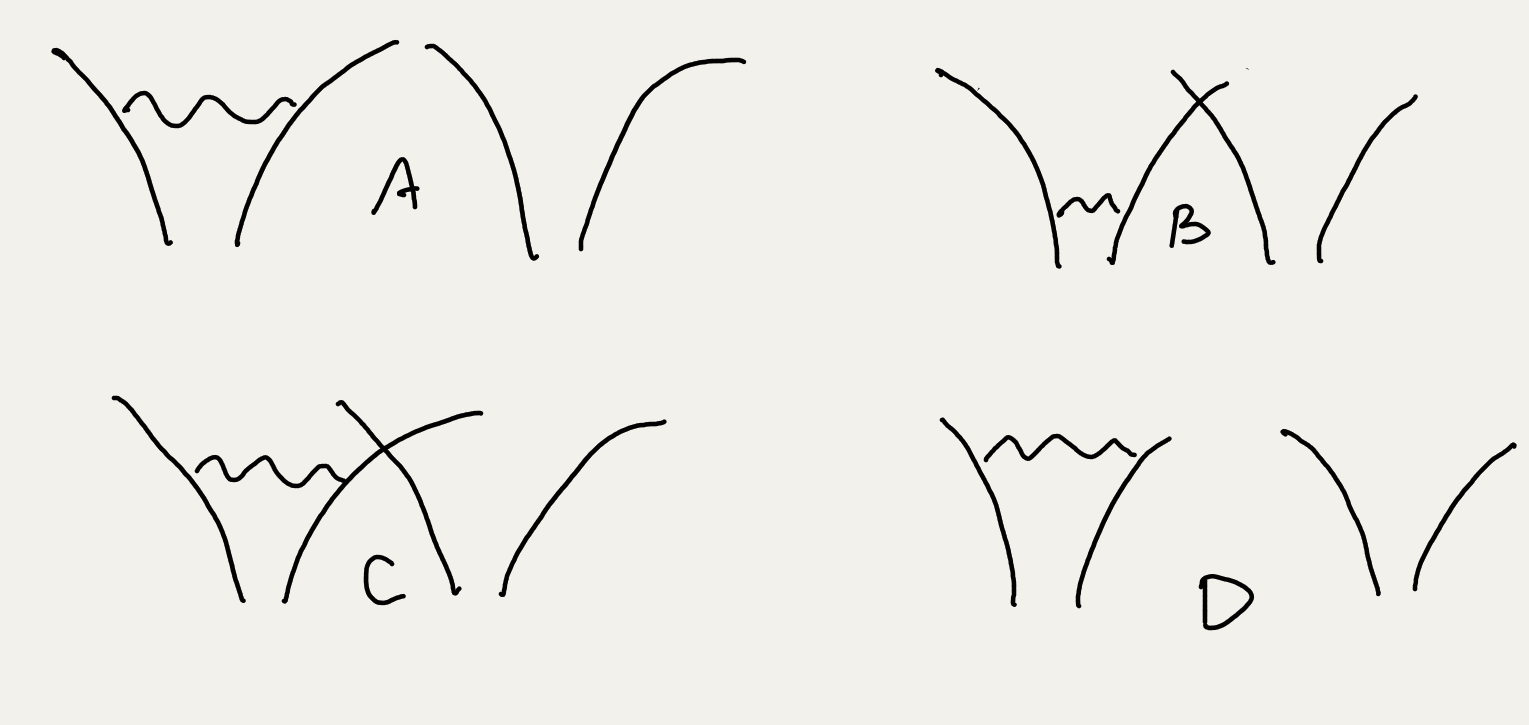 Quantitative models can be used to calculate approximate electron energies. Electron energies and angular momenta in an atom are quantised.
Quantitative models can be used to calculate approximate electron energies. Electron energies and angular momenta in an atom are quantised.
Key Concepts
The Bohr model predicts the hydrogen spectrum by applying the equations for circular motion for electron orbits that have quantised angular momentum.
The energy of an electron in an energy level is given by:
\(E=-{13.6\over n^2}\)
- \(E\) is the energy associated with the \(n^{th}\) energy level (eV)
- \(n\) is the number of the energy level
The consequence is that, moving out from the nucleus, orbits get further apart but the energy difference gets less.
Hence, the energy of an emitted photon when an electron moves down between energy levels is:
\(E = 13.6({1\over {n_f}^2} - {1\over {n_i}^2})\)
Angular momentum
In the Bohr model, angular momentum is quantised. We commence by:
- Recalling the de Broglie wavelength of an electron, \(\lambda={h\over mv}\)
- Using the standing wave condition that a circumference of an orbit must be equal to a whole number of wavelengths, \(2\pi r=n\lambda_n\)
Combining these conditions:
\(\Rightarrow 2\pi r=n{h\over mv}\)
\(mvr={nh\over 2\pi}\)
- \(mvr\) is angular momentum (kgm2s-2)
- \(n\) is an integer equal to 1 minus the quantum number
- \(h\) is Planck's constant (Js)
This calculation reveals the flaw in the Bohr model. We cannot know both the position and momentum of a particle.
Spin
Observations from the Stern-Gerlach experiment demonstrate that electron spin is another quantised property. Electron spin can take one of two values.
How much of Atomic models have you understood?



.png)

 Twitter
Twitter  Facebook
Facebook  LinkedIn
LinkedIn